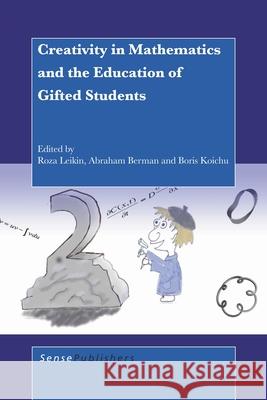Creativity in Mathematics and the Education of Gifted Students » książka
Creativity in Mathematics and the Education of Gifted Students
ISBN-13: 9789087909338 / Angielski / Miękka / 2009 / 420 str.
Creativity in Mathematics and the Education of Gifted Students
ISBN-13: 9789087909338 / Angielski / Miękka / 2009 / 420 str.
(netto: 234,73 VAT: 5%)
Najniższa cena z 30 dni: 236,46
ok. 30 dni roboczych
Bez gwarancji dostawy przed świętami
Darmowa dostawa!
This resource suggests directions for closing the gap between research in the field of mathematics education and research in the field of creativity and giftedness. It also outlines a agenda for further research and development in the field.
This book breaks through in the field of mathematical creativity and giftedness. It suggests directions for closing the gap between research in the field of mathematics education and research in the field of creativity and giftedness. It also outlines a research agenda for further research and development in the field. The book consists of a balanced set of chapters by mathematicians, mathematics educators, educational physiologists and educational researchers. The authors of different chapters accept dynamic conception of creativity and giftedness. The book provides analysis of cognitive, affective and social factors associated with the development of creativity in all students and with the realisation of mathematical talent in gifted students. It contains theoretical essays, research reports, historical overviews, recommendations for curricular design, and insights about promotion of mathematical creativity and giftedness at different levels. The readers will find many examples of challenging mathematical problems intended at developing or examining mathematical creativity and giftedness as well as ideas for direct implementation in school and tertiary mathematics courses. They will also find theoretical models that can be used in researching students creativity and giftedness. Research reports enlighten relationships between excellence in mathematics and creativity and examine different aspects of inquiry-based environment as a powerful way for developing mathematical creativity in school students. The readers can also learn about characteristics of creativity of research mathematicians. The book may be of interest to a broad audience of readers, from mathematicians and mathematics educators to mathematics teachers, psychologists and parents of mathematically promising children.











